This article contains affiliate links. The book images link to Amazon Associate links in which the author receives payment.
Technology is changing at a rapid pace and staying ahead, and it’s essential to learn constantly. I will introduce you to 10 books that I most often recommend to my clients that address the issues that consistently come up in coaching IT and technology professionals. You’ll learn about the insights each book provides as well as what they can do for your leadership development — from showing you how to boost performance and impact down to improving your overall well-being!
Positive Intelligence by Shirzad Chamine
In this book, Shirzad Chamine introduces readers to ‘positive intelligence’ — a new approach based on awareness and understanding rather than judgmental analysis. Positive Intelligence includes the Mental Fitness practices to utilize the parts of our brain that are more creative and open vs. the part of our brains that sabotage us. Full disclosure I am a PQ coach and use this book and the program as the basis of coaching with all of my clients.
How this book will help you be a better leader
Positive Intelligence teaches technology leaders how they can improve their performance at work by commanding their thoughts rather than letting them control us. It also touches on leadership development from an interpersonal perspective which includes how leaders should be compassionate towards themselves first before extending compassion to others. If there isn’t true self-compassion, then it’s nearly impossible to empathize with others authentically.
Technology organizations have a lot of logical and rational “thinkers.” The principles shared in this book are an efficient and concrete way to bring out the human connectedness needed to balance out the Hyper-Rational world of technology.
The Innovator’s Dilemma by Clayton Christensen
The Innovator’s Dilemma by Clayton Christensen is a book about how successful companies are often their own worst enemy. The principles shared in this book helps to illustrate the importance of being open-minded and aware of opportunities, no matter how small they seem to be at first. This book also explores why some organizations continue to thrive while others fail and what it takes to innovate successfully over time.
This book is an essential read because success comes from understanding that change will happen. Still, only those who plan ahead can survive them rather than trying to resist inevitable shifts towards new ways of doing things.
How can this book help you as a leader?
In this book, the author is an expert in studying what makes good companies great. In his research, he found that successful organizations were often their own worst enemies because they make changes too quickly and resist new ways of doing things. He advised leaders to be open-minded about innovation and listen for opportunities no matter how small or insignificant they may seem at first glance. This book is an excellent read for any leader who wants to learn more about where success comes from and why some organizations continue to thrive while others fail over time.
Crossing the Chasm by Geoffrey Moore
In this book Moore describes how to take a product from early adopters and make it appealing enough for the less adventurous mainstream customer. The book is designed as an advice guide on marketing strategy but contains some significant insights about what makes excellent companies great.
Moore explains two types of customers: innovators (those who want something new and better) and pragmatists (mainstream or laggards). It discusses how significant changes happen when crossing this so-called “chasm” between these groups of people.
How can this book help you as a leader?
This book can help a leader in two ways. The first is to understand the market for your product and how it changes as you cross into new markets where there may be different customer needs, desires, and mindsets. Secondly, this will also give insights on what kind of culture best suits each type of audience (innovators vs. pragmatists). This insight helps you “see” why some engage while others resist. Also, as a leader you have this same make-up of mindsets in your orginization so this book will also help you motivate your team based on thier diffrent mindset.
Mindset by Carol S. Dweck
In this book Dweck explores mindsets toward learning.One of the most import understandings is that people fall into two categories: growth mindset or fixed mindset. A person with a growth mindset believes they can change what’s inside them and grow, while a person with a fixed mindset believes their qualities are just set from birth. The former thinks, “I learned this skill through hard work and practice,” while the latter says, “I have been born smart.”
The first type does not see obstacles as insurmountable but rather opportunities to gain new knowledge or skills. The second considers an obstacle to be an indication to give up — in school, for instance, it would be seen more often among those who find subjects too difficult ‘because I’m stupid.
How can this book help you as a leader?
This book on mindset could help you as a leader by highlighting how important it is to have an open, growth-oriented attitude. These powerful shifts can apply in your own life and with those around you at work or home. You may also find that reading this book will give some insight into what type of person you are — whether fixed or growth mindset.
The Power of Habit by Charles Duhigg
This book explores how habits are created and changed, with practical advice for anyone who wants to understand their own or someone else’s. The book will give insight into your behaviors which should be able to aid in building habits and routines that serve you and others. It also touches on organizational culture and individual development, making it very interesting to read at any level within an organization.
How can this book help you as a leader?
Well as a leader you are a human being and you have established “ways” that may not serve you… especially some that were esstablished as an individual contributer. Great leaders lead from the front. This book can show your team or organization that what has been established but needs to change can be done using the stratagies in this book.
Drive by Daniel H Pink
Drive explores what motivates people and demonstrates that traditional rewards (such as money, fame, or even power) have diminishing returns. Pink establishes that we must understand the motivation behind our employees to get them to succeed. This book will give great insight into how we should motivate others to find success under your leadership.
How can this book help you as a leader?
Drive explores all sorts of human motivations, from our most basic needs (like food) to more abstract ones (like autonomy). It also shows us how we can unleash these “three essential drives” — mastery, purpose, and social connection — to achieve success at home and work. In other words: it’s an excellent tool for any manager or leader who wants their people to work up to their fullest potential!
Thinking Fast and Slow by Daniel Kahneman
The book is about how our minds are split into two parts: the intuitive system controls most of what we do, and then there’s a slower reasoning system. Kahneman discusses how these systems work separately but also influence each other to produce some fascinating phenomena — like in-group bias or cognitive dissonance.
How can this book help you as a leader?
It shows us just how susceptible we all are to certain biases and errors when making decisions on important topics like careers, relationships, investments, and leadership! This knowledge will allow any manager or business owner (i.e., you) to be more self-aware and improve their decision-making skills.
Creativity Inc . by Ed Catmull and Amy Wallace
This book was written by Ed Catmull, the president of Pixar Animation Studios and Disney Animation Studios, and Amy Wallace, an award-winning journalist for Wired magazine. It’s about how to cultivate creativity in innovative teams. The authors argue that what caused their company (Pixar) to be so successful was not just luck; but instead, they developed creative ways to nurture innovation in their staff. They call this approach “management.”
This way of managing is based on three principles:
- Having excellent people who wanted to work at Pixar.
- Treating them with respect as individuals and professionals while being tough when necessary.
- Giving everyone both clarity about goals and freedom from interference from other parts of the organization.
How can this book help you as a leader?
This book provides insights on developing creativity within teams and will help you customize your approach based on the needs of your team. This book also offers leaders practical advice on nurturing innovation and trust through useful concepts and simple methods.
Leaders Eat Last by Simon Sinek
This a book about leadership and how to build an organization that motivates people, inspires creativity and encourages innovation. This book provides insights on developing creativity within teams and will help you customize your approach based on the needs of your team. Sinek argues leaders should put their employees first, not just as valuable members of the team but also as human beings who have families. He suggests business leaders could create more sustainable organizations if they stopped thinking solely in terms of profit or loss statements at any given moment.
How can this book help you as a leader?
Honestly, so many leaders do not have the skill to be effective at leading. Often this results in a very directive and forced leadership style. This book helps understand the humans you work with and how the whole person is part of the success, not just their skills. This book is particularly beneficial for leaders of Millennials and the generations that follows.
Dare to Lead by Brene Brown
As leaders, we have to ask for help and not be afraid of showing vulnerability. This book shares stories from the most successful people in various industries who became vulnerable and asked for assistance when they needed to move forward quickly. It also reveals how a person’s willingness to go through this process helps them reach their goals and inspire others as well!
How can this book help you as a leader?
When you show your weaknesses or vulnerabilities, it is empowering for those around you to know they are trusted with this personal and human aspect. They will likely feel like they don’t have to be perfect and have all the answers and, more importantly, that it is safe to be vulnerable themselves. This trust can lead to courageous, innovative, and strong teams.
That’s It!
I hope you enjoyed this list of 10 books that are helpful for IT and technology professionals. They address the issues that consistently come up in coaching, such as boosting performance and impacting or improving your overall well-being (and they have helped me!). What other influential books do you recommend? Let me know in the comments!












